Comparative analysis of buckwheat and pearl barley: which cereal is healthier, which has more calories
Nutritionists advise including cereals in your daily menu. Buckwheat is usually put in first place, about the healing properties of which much is known. Less popular now, pearl barley was in great demand in the last century. So what is healthier - buckwheat or pearl barley - we will tell you further.
Chemical composition and trace elements
The chemical composition of cereal determines its nutritional value and value. for the body.
Buckwheat
Vitamin content (per 100 g):
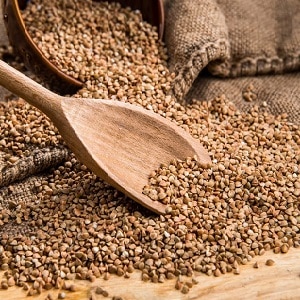 A - 2 mcg;
A - 2 mcg;- beta-carotene - 0.01 mg;
- B1 - 0.43 mg;
- B2 - 0.2 mg;
- B4 - 54.2 mg;
- B5 - 0.44 mg;
- B6 - 0.4 mg;
- B9 - 32 mcg;
- E - 0.8 mg;
- K - 7 mcg;
- RR - 7.2 mg.
Micronutrient content (per 100 g) and percentage of daily value:
- iron - 6.7 mg, 37.2%;
- cobalt - 10 mcg, 31%;
- manganese - 2 mg, 78%;
- copper - 1000 mcg, 64%;
- molybdenum - 70 mcg, 49.1%;
- selenium - 55 mcg, 10.4%;
- chromium - 50 mcg, 8%;
- zinc - 12 mg, 17.1%.
Pearl barley
Vitamin content (per 100 g):
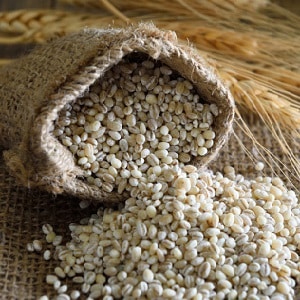 A - 1 mcg;
A - 1 mcg;- beta-carotene - 0.013 mg;
- B1 - 0.12 mg;
- B2 - 0.06 mg;
- B4 - 37.8 mg;
- B5 - 0.5 mg;
- B6 - 0.36 mg;
- B9 - 24 mcg;
- E - 1.1 mg;
- K - 2.2 μg;
- RR - 3.7 mg.
Micronutrient content (per 100 g) and percentage of daily value:
- iron - 1.8 mg, 10%;
- cobalt - 1.8 mcg, 18%;
- manganese - 0.65 mg, 32.5%;
- copper - 280 mcg, 28%;
- molybdenum - 12.7 mcg, 18.1%;
- selenium - 37.7 mcg, 68.5%;
- chromium - 12.5 mcg, 25%;
- zinc - 0.92 mg, 7.7%.
Does every cereal contain gluten?
Gluten is found in many grains. This complex natural protein is otherwise called gluten.
High percentage of gluten content in wheat. Therefore, dough made from wheat flour is elastic and rises well.
Attention! Buckwheat does not belong to cereals and does not contain gluten.
Pearl barley is obtained by barley processing. Barley is a cereal crop containing gluten. There is a variety of it in pearl barley - hordein.
100 g of cereal contains up to 2.8 g of this protein. Because of this element, pearl barley porridge is considered difficult to digest. It is categorically not recommended for children at an early age.
Calorie content, BJU, glycemic index
Calorie content is the energy value of food. The number of calories shows how much energy the body receives. Energy suppliers are nutrients: proteins, fats, carbohydrates.
Buckwheat
The calorie content of 100 g of buckwheat is 308 kcal, which is 18.3% of the daily value.
Nutrient content:
- proteins - 12.6 g;
- fats - 3.4 g;
- carbohydrates - 57.1 g;
- dietary fiber - 11.3 g;
- water - 14 g;
- ash - 1.7 g.
Glycemic index - within 50-60 units. This is considered average. Buckwheat cooked in water has a lower index - 40-50 units.
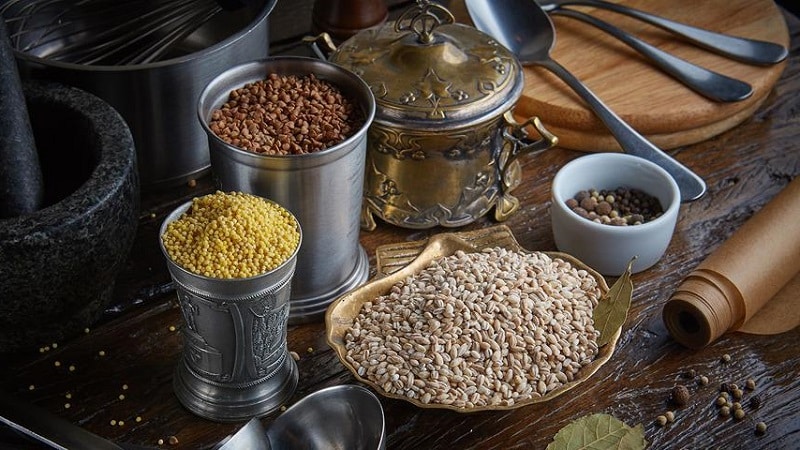
Pearl barley
The calorie content of 100 g of pearl barley is 315 kcal, which is 18.7% of the daily value.
Nutrient content:
- proteins - 9.3 g;
- fats - 1.1 g;
- carbohydrates - 66.9 g;
- dietary fiber - 7.8 g;
- water - 14 g;
- ash - 0.9 g.
Glycemic index - within 20-30 units. This is the lowest figure among cereals. Barley porridge is digested slowly, and a person feels full for a long time.
What is higher in calories, where there are more carbohydrates - in buckwheat or barley?
Based on nutritional value, carbohydrates are divided into:
- Digestible. Digested, broken down, combined during chemical processes occurring in the body.
- Indigestible. Not broken down by digestive tract enzymes.
| Index | Buckwheat | Pearl barley |
| Calorie content | 308 kcal | 315 kcal |
| Carbohydrates | 57.1 g | 66.9 g |
| Digestible carbohydrates | ||
| Starch | 55.4 g | 65.7 g |
| Mono- and disaccharides | 1.4 g | 0.9 g |
| Glucose | 0.43 g | — |
| Lactose | 0.03 g | — |
| Maltose | 0.17 g | — |
| Sucrose | 0.69 g | — |
| Fructose | 0.04 g | — |
Starch is the main digestible carbohydrate. It breaks down into glucose, which serves as one of the sources of energy.
As can be seen from the table, the starch content in pearl barley is higher. This means that it takes longer to digest and the feeling of fullness lasts longer.
When eating pearl barley porridge, the body receives more energy - that means it has more calories.
What's best for losing weight
When choosing dietary products, pay attention not only to the number of calories, but also on the glycemic index of the product.
This indicator is responsible for how the body absorbs a particular product. The index has a scale from 0 to 100:
- Short. Indicator up to 39 units. Assimilation occurs slowly. The feeling of hunger does not come soon.
- Average. Indicator up to 70 units. A person remains feeling full for a long time. Sugar rises to acceptable levels.
- High. The indicator is above 70. The body receives a lot of energy from food intake. If it is not spent on time, it is stored as fat. Foods with a high glycemic index do not saturate the body. Blood sugar levels rise and excess insulin is produced.
For weight loss, nutritionists recommend cereals with low and medium glycemic index.
Pearl barley belongs to the category with a low indicator - 20-30 units.
Buckwheat - in the category with an average indicator of 50-60 units, and boiled with water - 30-40.
This means that pearl barley comes first for weight loss.. Buckwheat not much inferior to her.
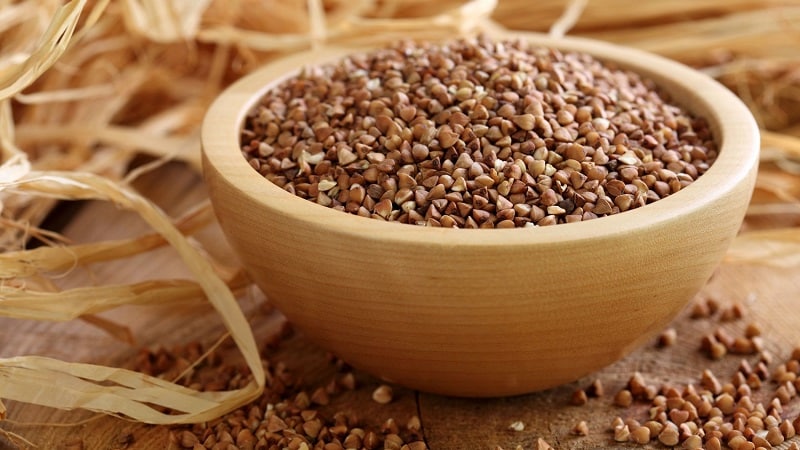
Beneficial properties for the body
Talks about the benefits for the body vitamin and mineral composition.
Buckwheat
Beneficial features:
- Choline contributes to the proper functioning of the nervous system. Participates in the functioning of the brain.
- Polyunsaturated fats, phospholipids, phytoestrogens, flavonoids help regulate metabolism.
- Fiber helps cleanse the body. Participates in the functioning of the digestive system.
- B vitamins promote carbohydrate, water-salt, and protein metabolism.
- Buckwheat dishes serve as natural antidepressants. Relieve fatigue and help recover from stress.
Pearl barley
Pearl barley is rich vitamins and microelements.
Interesting! In ancient Rome, pearl barley was given to gladiators before battle.
Has many useful properties:
- Fiber helps intestinal function. It is not digested by enzymes of the digestive tract, but cleanses the intestinal walls.
- Calcium and magnesium help maintain bone health. They participate in its restoration and formation of a new one.
- Strengthens the immune system.
- Selenium is an antioxidant. Fights signs of skin aging.
Interesting things on the site:
The benefits and harms of coffee drink made from barley and rye
What is healthier for the body?
To understand which cereal is healthier - buckwheat or pearl barley - compare vitamin and mineral composition.
As a result of comparing the indicators, it is clear that the content of vitamins and microelements is higher in buckwheat.This means that buckwheat is healthier for the body.
What is healthier for the stomach?
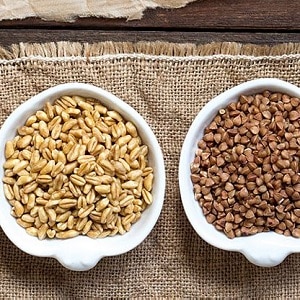 Despite the fact that buckwheat is superior to pearl barley in terms of vitamin content and microelements; pearl barley is healthier for the stomach.
Despite the fact that buckwheat is superior to pearl barley in terms of vitamin content and microelements; pearl barley is healthier for the stomach.
This is due to the presence of hordein in it - an element that helps restore the gastric mucosa. This is an important stage of recovery for gastritis with high acidity.
Barley decoctions are included in therapeutic diets for diseases of the digestive system.
Harm and possible contraindications
The beneficial properties of buckwheat and pearl barley do not exclude presence of contraindications.
Buckwheat
Buckwheat should be consumed with caution:
- people with increased blood clotting;
- with individual intolerance;
- for gastritis, ulcers.
Buckwheat can be harmful if consumed for more than three days as part of a mono-diet: due to a lack of useful elements, dizziness, weakness, insomnia, irritability, and disturbances in the gastrointestinal tract begin.
Pearl barley
Not recommended:
- people with low stomach acidity;
- children under 10 years old;
- with individual intolerance.
In case of excessive consumption of pearl barley, it may disrupt the work of the digestive tract and the leaching of calcium from the body begins.
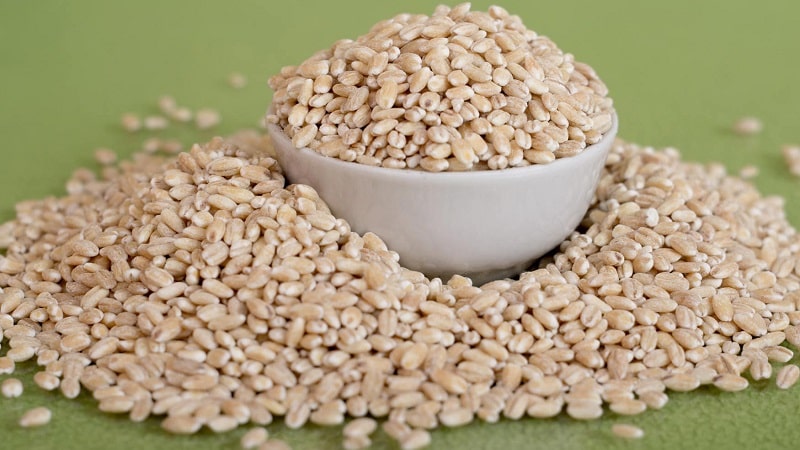
What is more expensive
We present data for the period May – September 2019.
Average price for buckwheat — 59 rub. for 1 kg. The cheapest is 36 rubles. — sold in Petropavlovsk-Kamchatsky. Buckwheat for 100 rubles. for 1 kg they buy in Krasnoyarsk, Novosibirsk, St. Petersburg, Nizhny Novgorod. Price in Moscow - from 50 to 120 rubles.
Average price for pearl barley — 38 rub. for 1 kg. The cheapest is 18 rubles. - in Voskresensk. Pearl barley for 50 rubles. sold in Sevastopol, Moscow.
Nutritionist opinions
We suggest that you familiarize yourself with the advice of nutritionists on consuming buckwheat and pearl barley.
Marina Anferova, Moscow: “I recommend a buckwheat diet to patients who do not have chronic gastritis or ulcers. I recommend buckwheat days to such people. Barley decoctions are good for medicinal purposes.".
Andrey Varenovsky, Voronezh: “In our center, a psychologist is involved in choosing a diet. He explains to the patient how to choose the right diet for weight loss so as not to experience severe stress. Buckwheat diet menus are the most gentle. Most patients have a negative attitude towards pearl barley only because it is tasteless.”.
Veronica Mikhailova, Irkutsk: “Pearl barley and buckwheat are almost the same in calorie content. When consumed, it cleanses the intestines well. Buckwheat is superior to pearl barley in terms of vitamins and minerals. But pearl barley has a healing effect for diseases of the digestive tract. It’s difficult to say specifically which one is more useful. Each organism requires an individual approach.”.
Conclusion
If you compare pearl barley and buckwheat, the former is inferior to the latter in terms of the content of vitamins and microelements. But barley is higher in calories; after eating it, the body does not need food for a long time. However, pearl barley porridge is not recommended for children under 10 years of age.
Both cereals are suitable as staples in diets as they have a low to medium glycemic index. When choosing a diet, the individual characteristics of the body and the presence of chronic diseases are taken into account.
Here's the *uki. We poured out 2 of the most delicious porridges. You can not do it this way. Both are cool. But more satisfying than pearl barley.